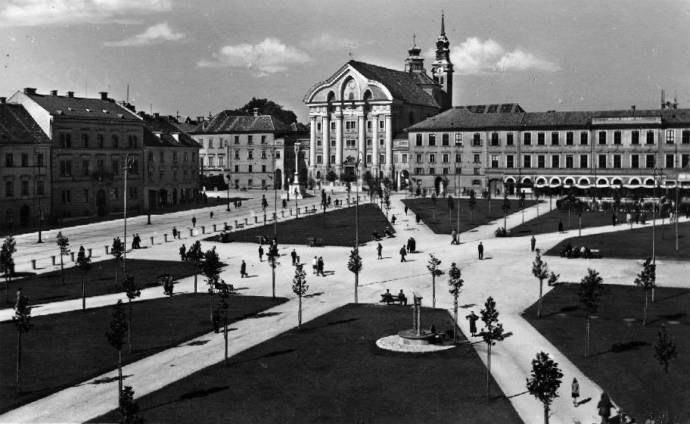March 10, 2018
Congress Square (Kongresni trg), aka Zvezda Park, was built in the early years of the nineteenth century, and much of it has remained unchanged for the last 150 years, with the buildings from old images simply repurposed if they don’t continue to house the same organisations or activities they always did.
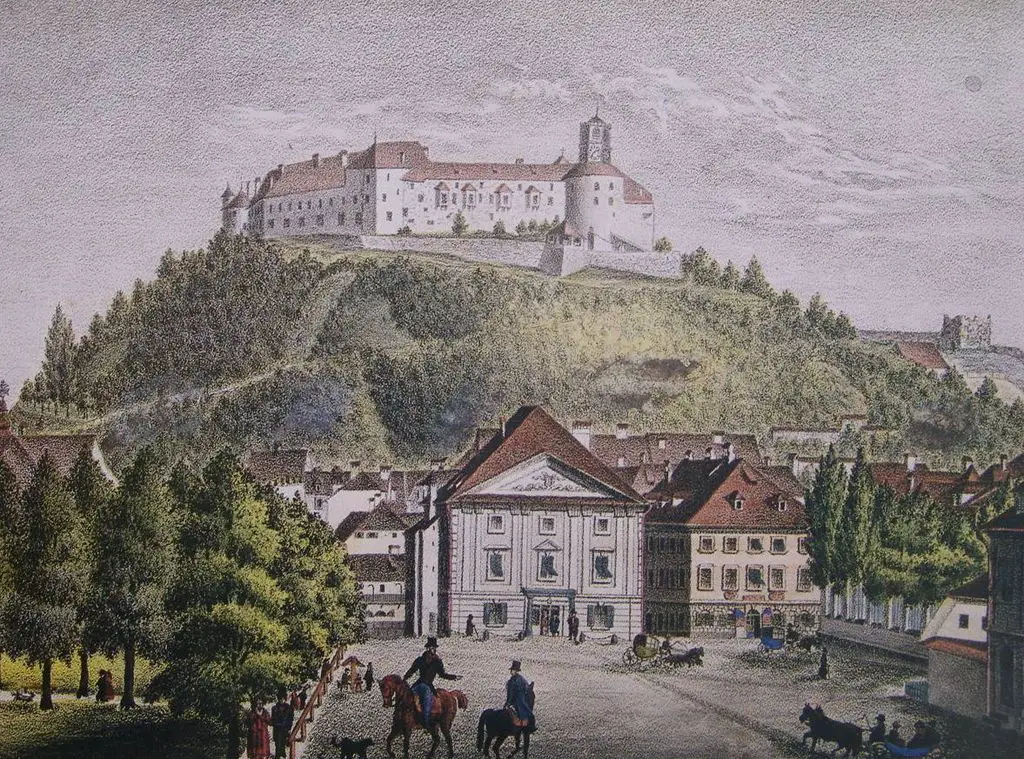
The view in 1836, showing the Provincial Theatre where the Philhamonia now stands
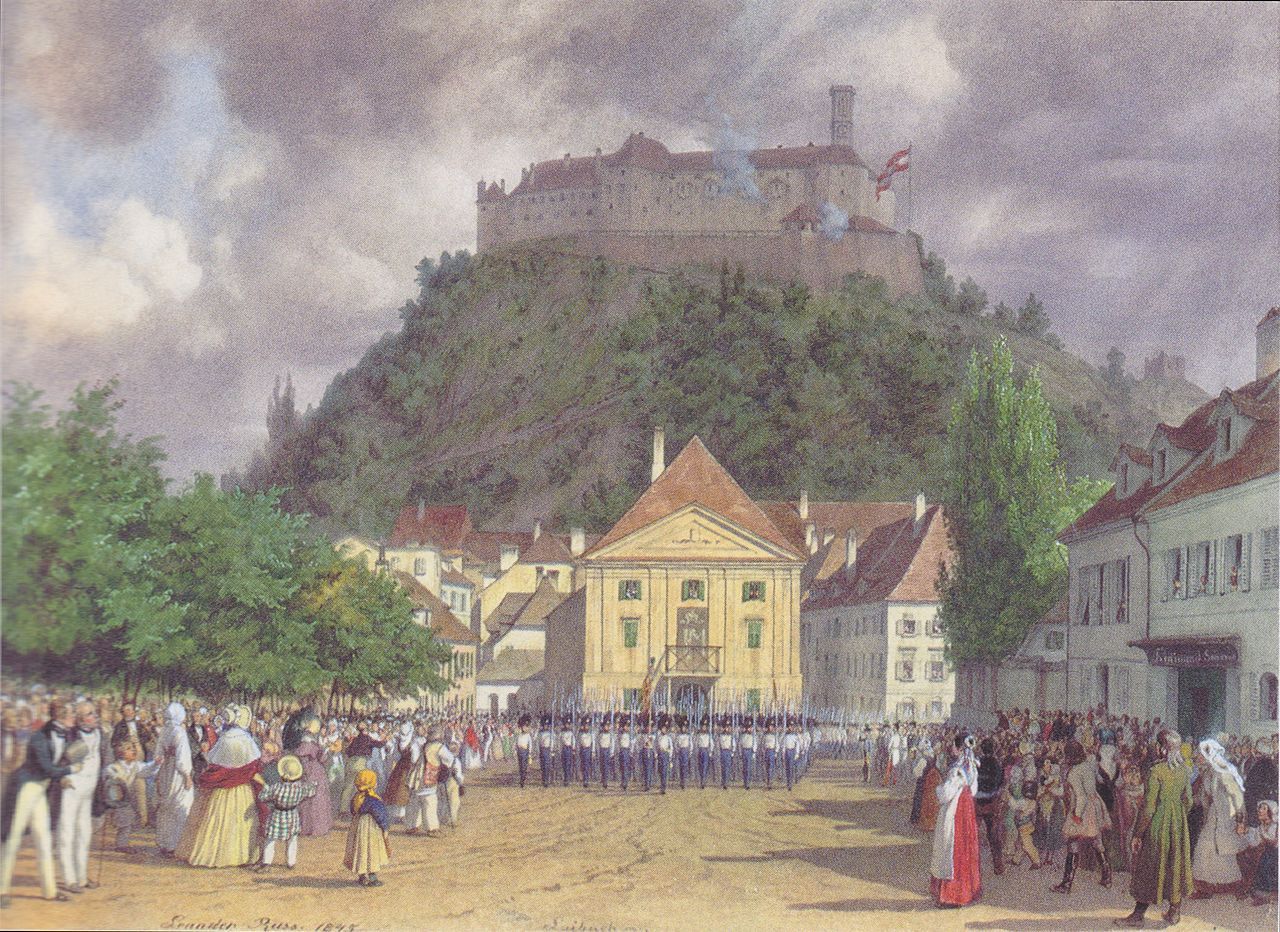
An imperial event in 1845
The square was created and named to mark the 1821 Congress of the Holy Alliance, when the Austro-Hungarian Emperor, King of Naples and Russian Tsar who met in Ljubljana.
The name Zvezda Park is an official one, and not, as a casual visitor might suppose, a nickname given because of the presence of Zvezda Café. Instead the park is so named because of the star-shape made by the paths that radiate out from the centre, as clearly seen in many of these images.
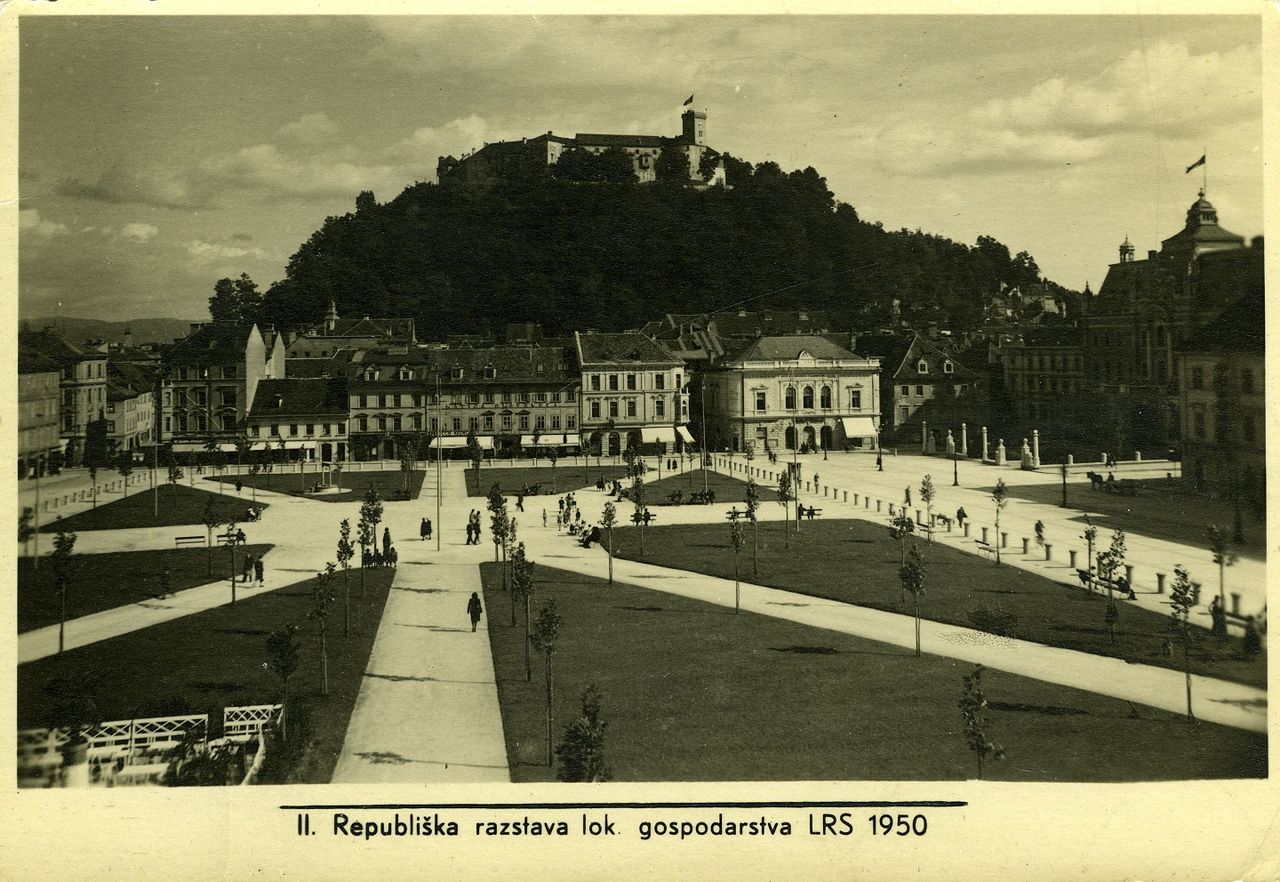
The radiating paths that give the park its name, in this postcard from 1950
The park is actually around 100 years older than the square, and was slightly redesigned in the 1930s by Jože Plečnik, who, in addition to his signature use of pillars, replaced the existing horse chestnut trees, which gave the space a densely wooded appearance, with plane trees, opening it up.
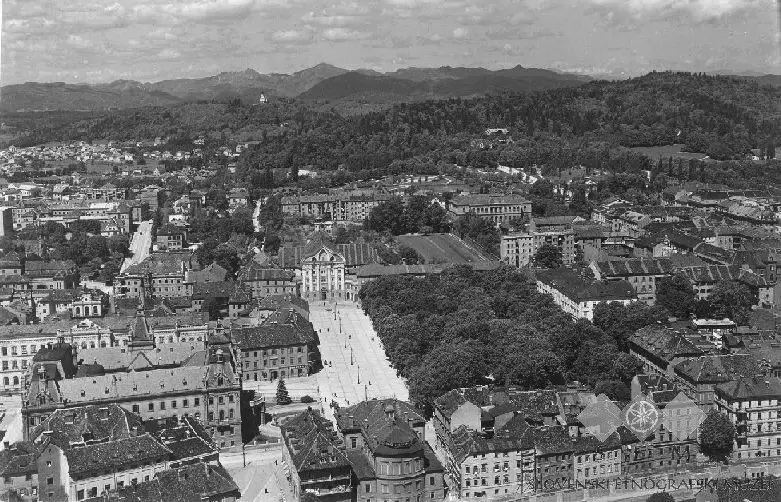
The old, more densely-wooded park, sometime in the first half of the 20th century
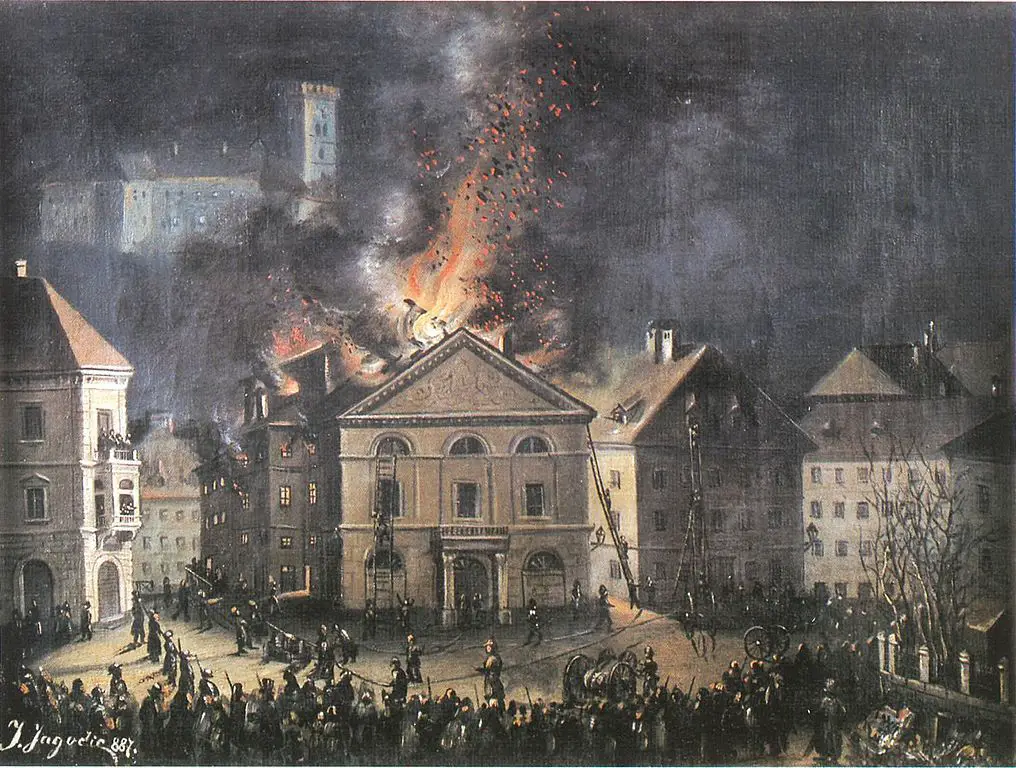
Painting from 1887, showing the theatre on fire
Plečnik also paved the ground between the Ursuline Church and the Slovene Philharmonic Building. The the latter was built in 1891, with the 1701 on its façade referring instead to the year when the Music Academy was founded. Indeed, there are many images where you can see the building that once stood here, the Provincial Theatre, which burned down in 1887. The stairs down to the river on the left-hand side of the Philharmonia were designed by Plečnik, as was the back of the building, which now houses a bar within its undulating walls.
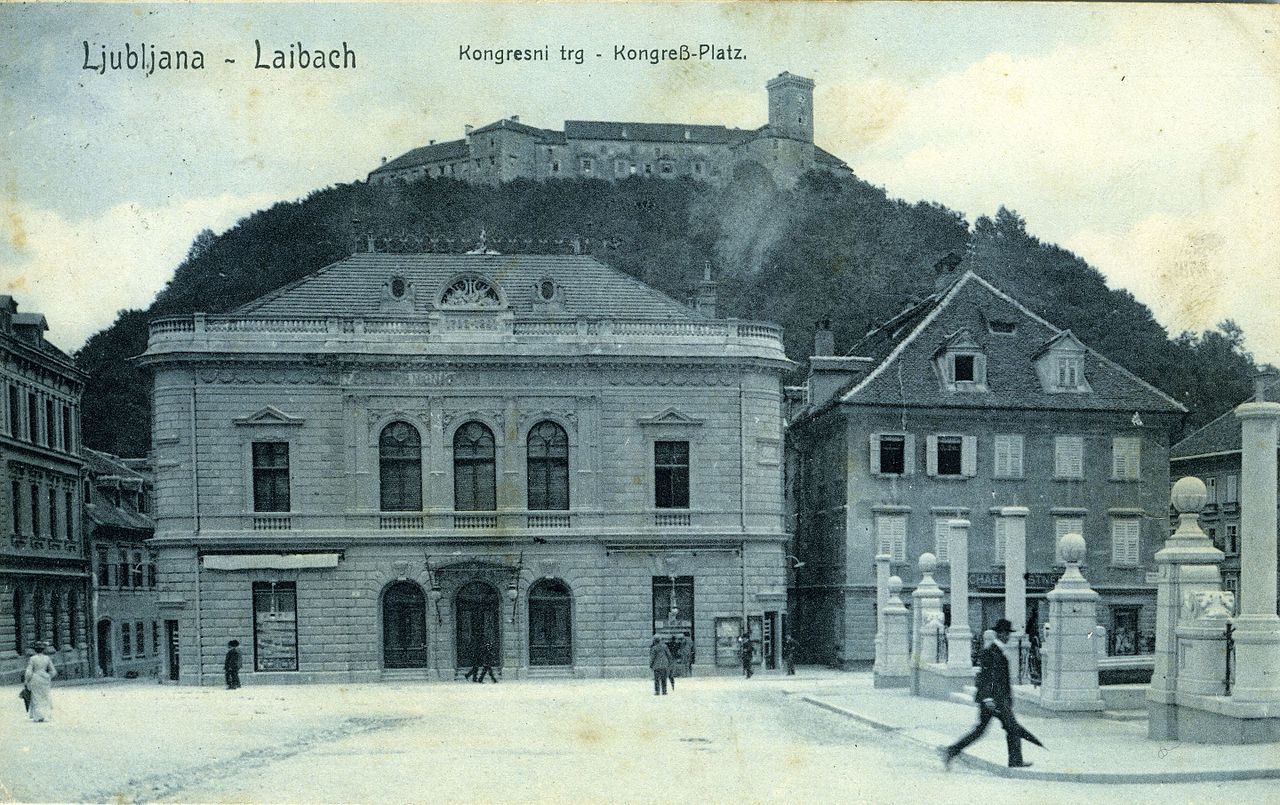
Postcard showing the Philharmonia from sometime in the first half of the 20th century. Note the unpaved ground
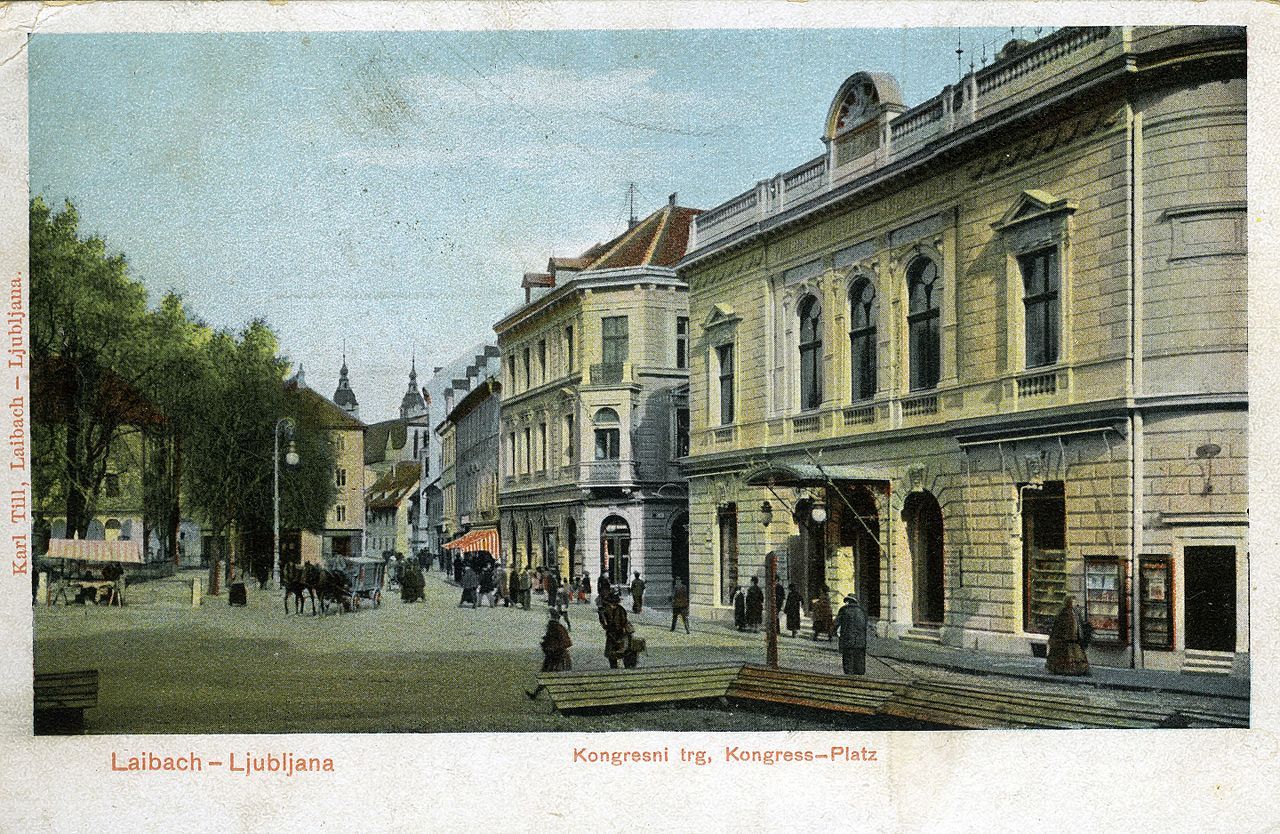
Postcard from 1908
Other notable structures in the square include the University headquarters, the balcony of which has played a role in numerous public events and announcements. This was built from 1896 to 1902, to replace a building damaged in the earthquake of 1895, and served as the seat of the Carniolan Parliament until the University took over in 1921.
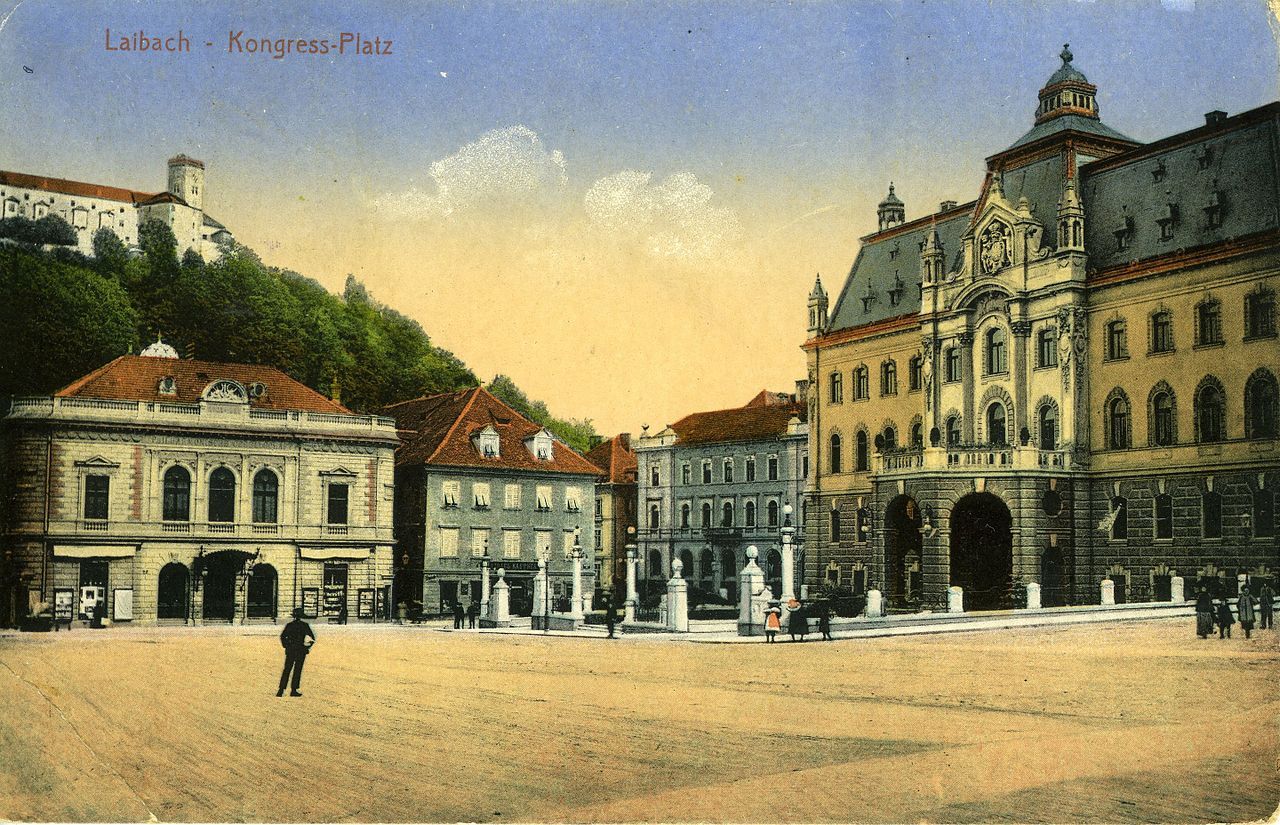
Postcard from 1912 showing what is now the university building
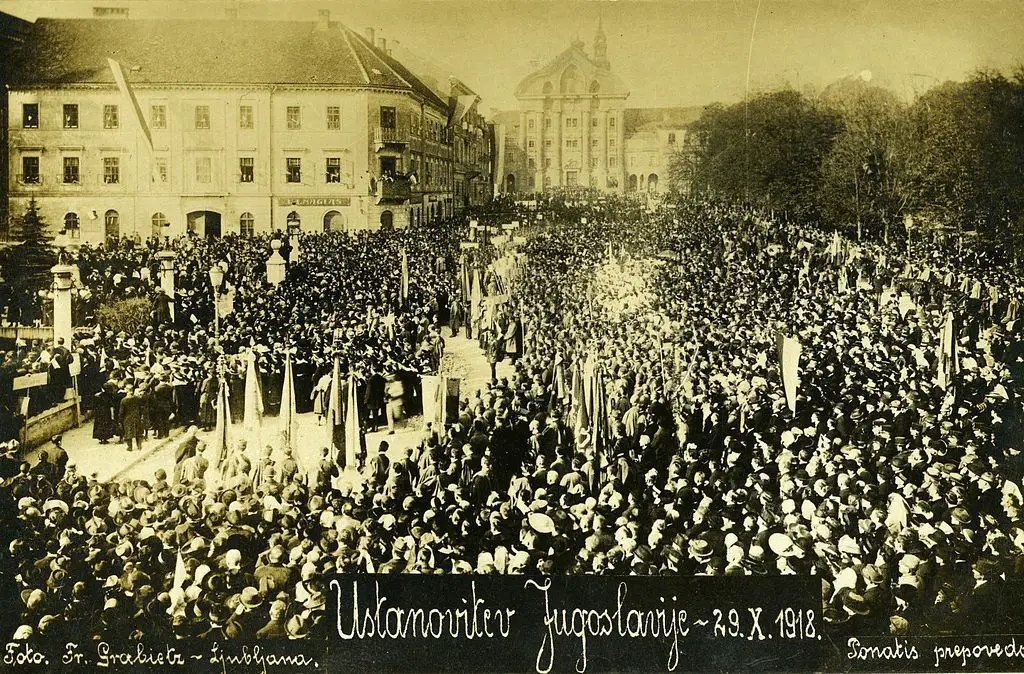
Crowds mark the fall of Austria Hungary on 18 October 1918
The Ursuline Church of the Holy Trinity, on Slovenska cesta, was built between 1718 and 1726, and is well worth taking a look inside if possible, as the main alter was carved by the same Francesco Robba who made what’s now known as the Robba Fountain, a replica of which sits by Town Hall across the river (the real one is in the National Gallery).
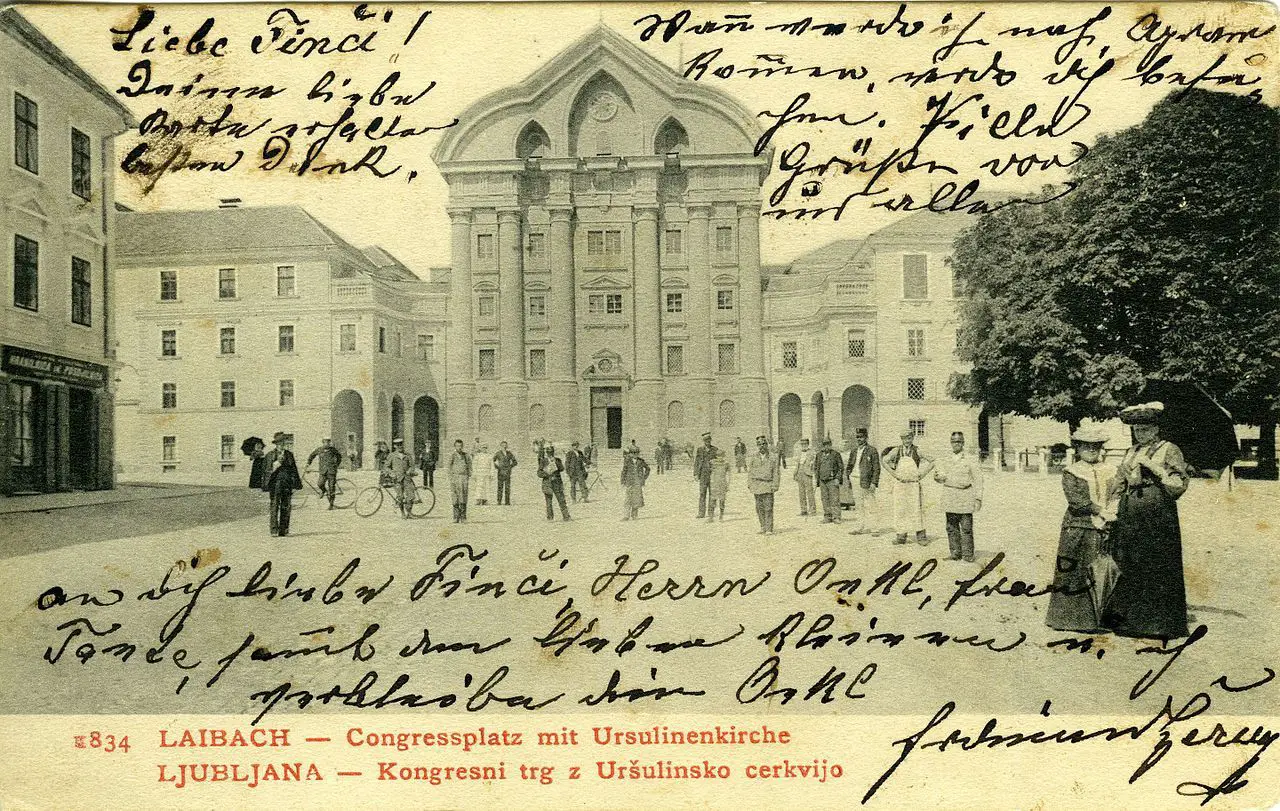
The Ursuline Church of the Holy Trinity, a postcard from the first half of the 20th century
The Kazina Building, on roughly the north side of the park, was built from 1836 to 1838 as a site for the balls and other events enjoyed by Ljubljana’s elite, including France Prešeren, who mentions the place in some of his poems.
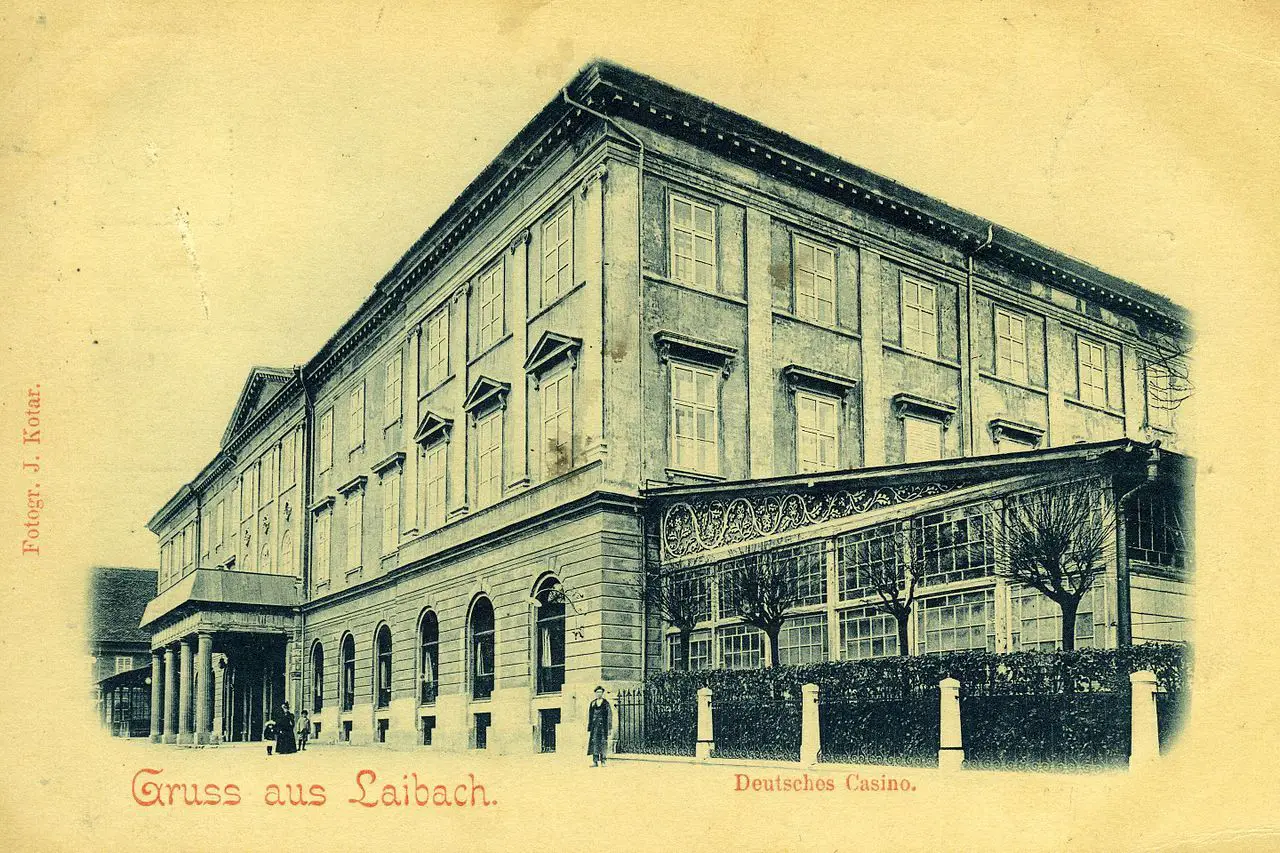
The Kazina Building sometime between 1895 and 1900
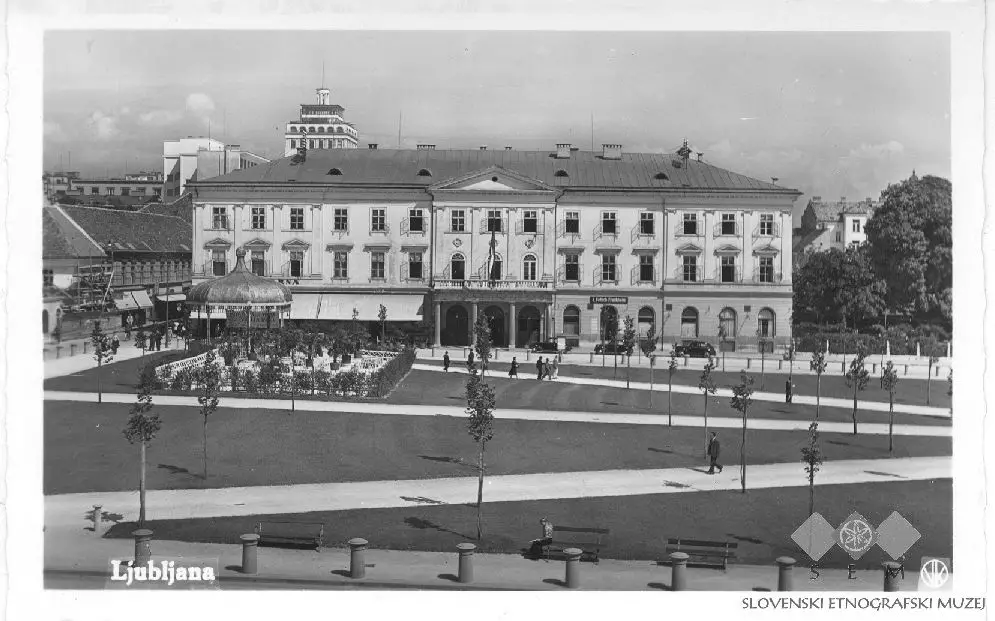
The Kazina Building in 1941
Today visitors to the park will see a large anchor from an Italian ship that sank during World War 2, which marks the annexation of Istria and the Slovene coast to Yugoslavia. There’s also a replica of a gilded statue of a citizen of Emona (Roman Ljubljana), and a statue of a child holding a garland that was placed here by Plečnik to mark a series of wartime demonstrations that were organised in the park by women.
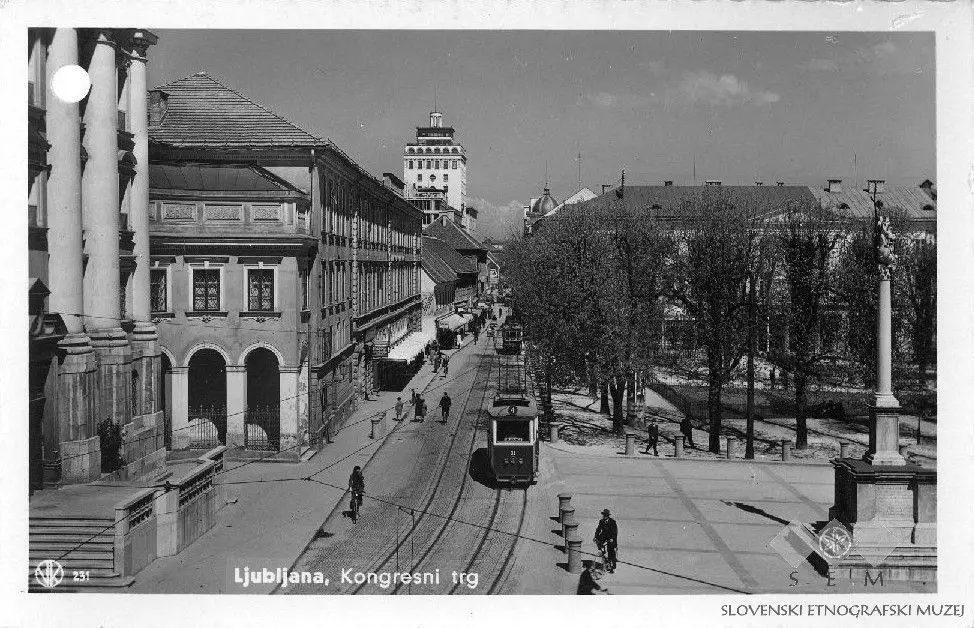
Postcard showing the tramway on Slovenska cesta, from the first half of the 20th century
The current, pedestrianised status of the site is a relatively recent development, and only a decade or so ago you could still see cars driving and parking here.
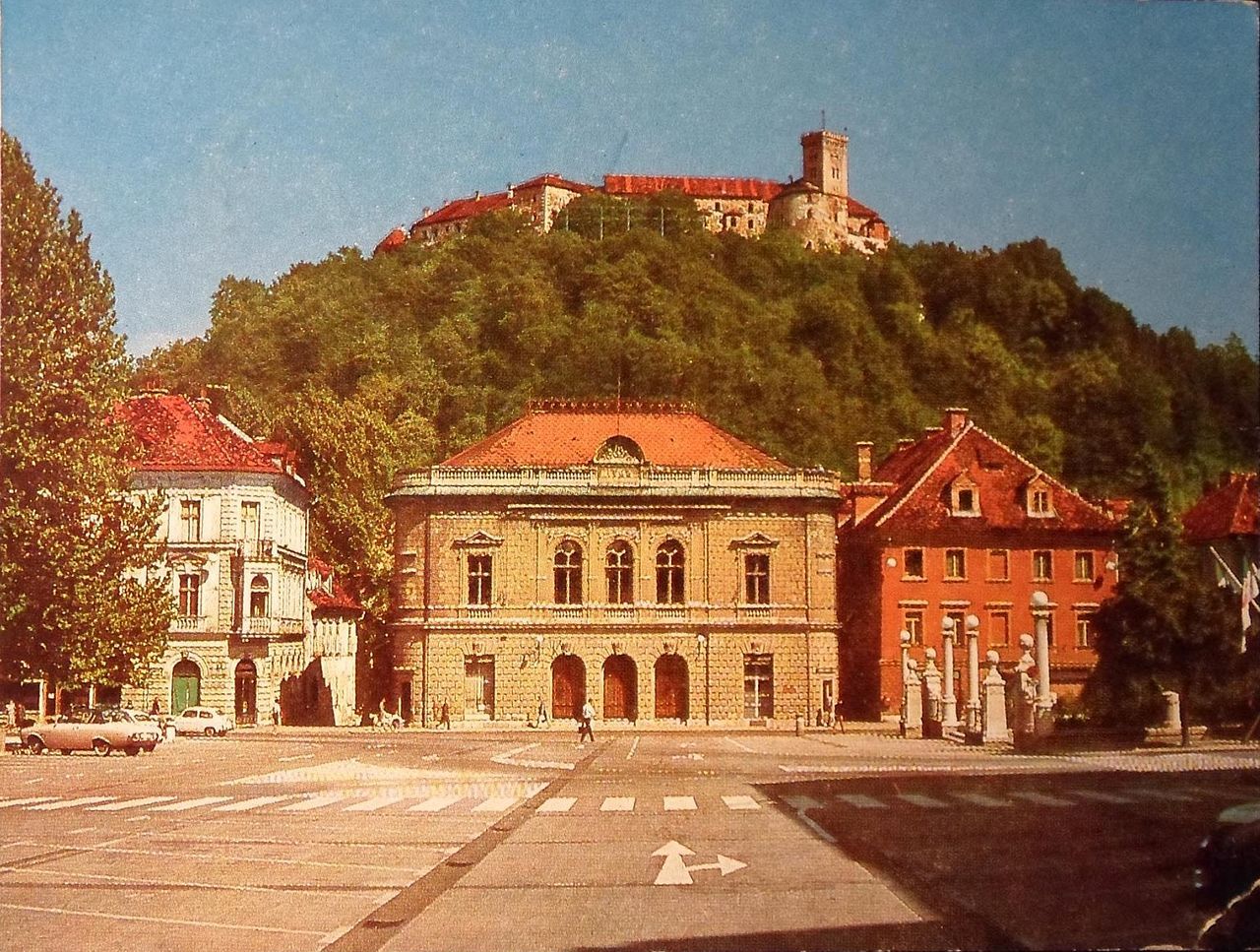
The square in 1966
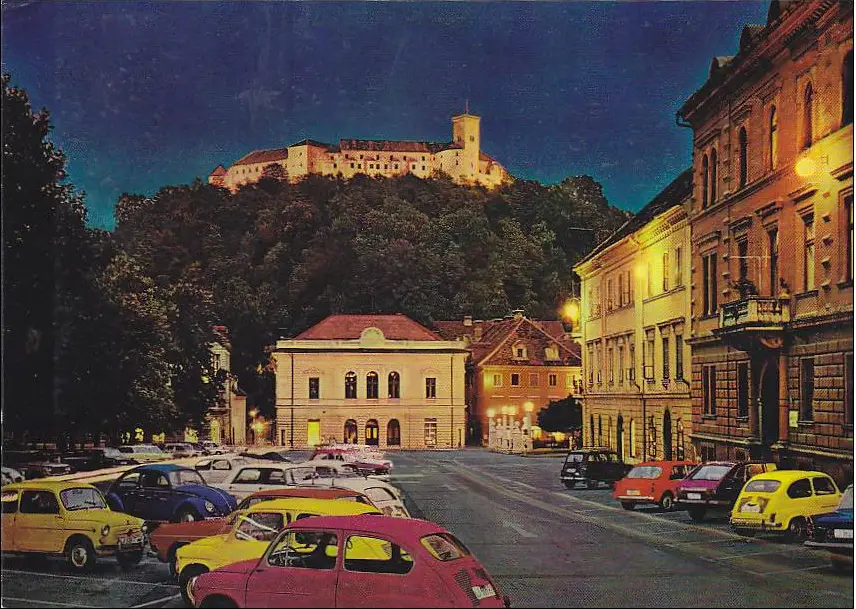
The square in 1969
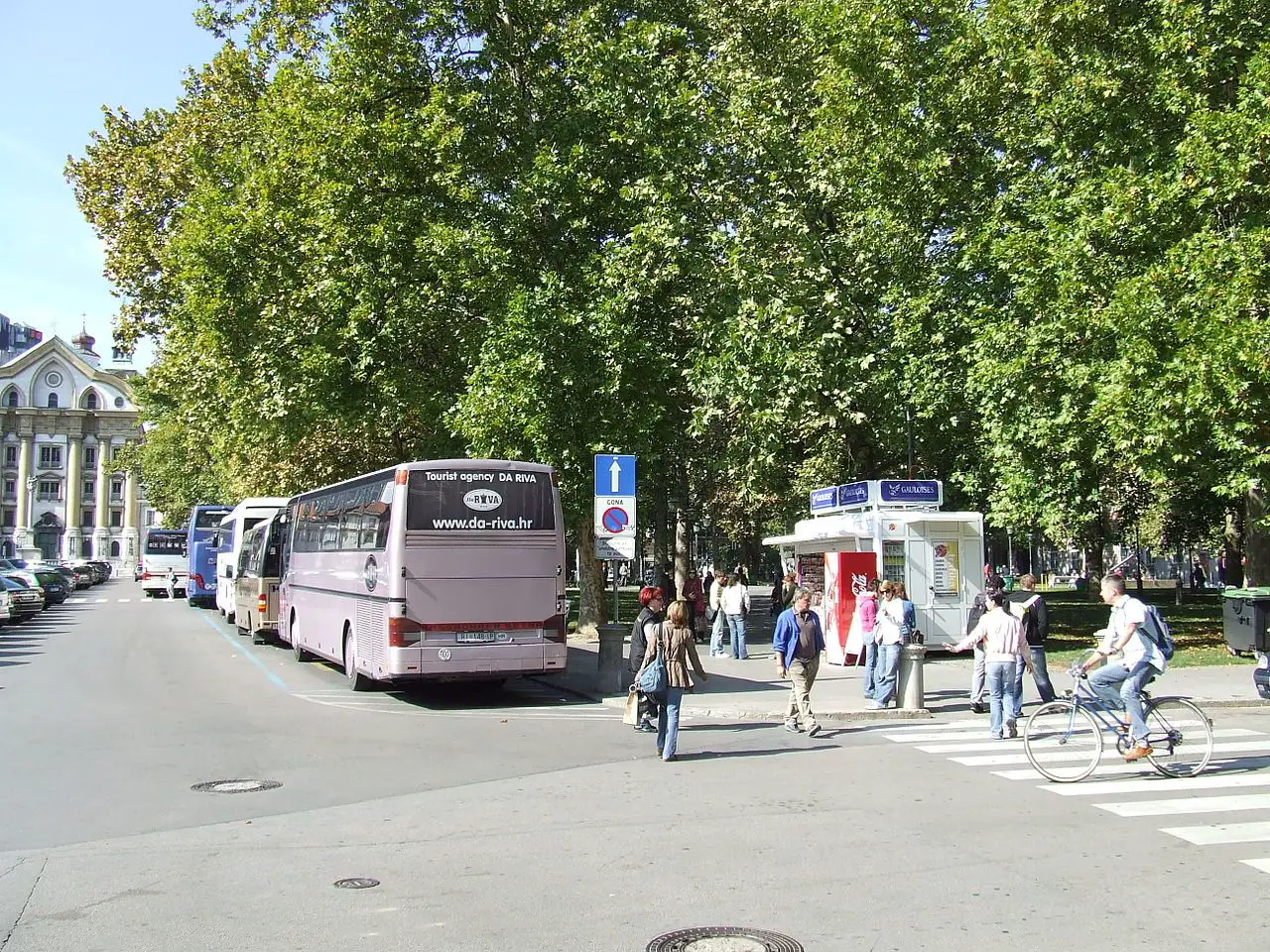
The square in 2006 (Chris Yunker CC by 2.0)

